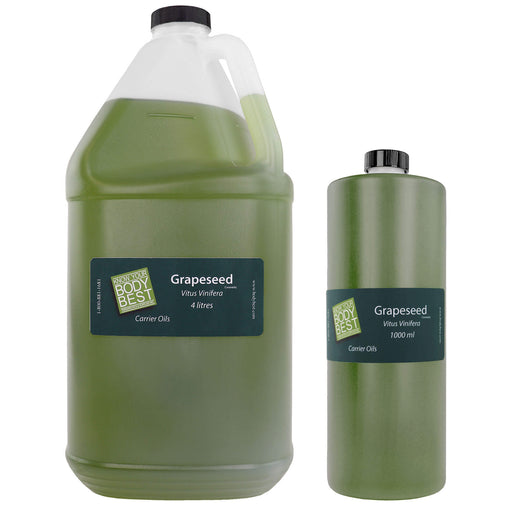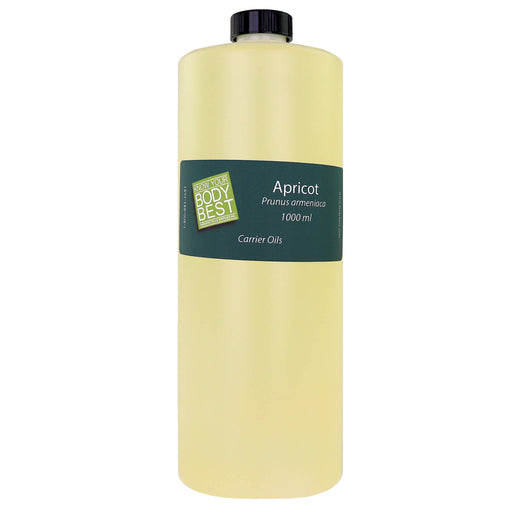over $250.00

Cold Therapy: What Is It and How Does It Work?
Cryotherapy (cold therapy) has been around since as early as 2500 BCE.
Between then and now, the therapeutic methods behind cold therapy have transformed.
However, the modality of cold therapy has remained the same. Healers have used it for pain relief measures while improving the client's comfort.
To learn more about what cold therapy is and how it works, keep reading.
How Cold Therapy Works
Cold therapy, also known as cryotherapy, works by reducing blood flow to a target area. This reduction in blood flow leads to a reduction in inflammation and swelling, which can also provide pain relief.
Reducing blood flow can also reduce nerve activity. During this temporary numbing period, patients may notice decreased pain.
Cold therapy is effective in treating multiple musculoskeletal conditions, including:
- Sprains
- Strains
- Arthritis
- Tendonitis
- Runner's knee
- Lower back pain
- Pain under a cast or splint
- Pain after a hip or knee replacement
If you sustain an injury, cold therapy may be a quick, effective treatment. It's likely that you'll be able to get back to your regular activities quickly.
Types of Cold Therapy
Cold therapy comes in many different forms. Here are the most common:
- Coolant sprays
- Frozen gel packs
- Ice packs
- Ice massage
- Ice baths
Additionally, there are more involved cold therapies.
Cryostretching uses cold therapy to reduce muscle spasms during stretching, while cryokinetics used cold therapy and active exercise to heal ligament sprains.
There are also whole-body cold therapy chambers that induce reduced blood flow throughout the body. This broader therapy may be a better choice for individuals dealing with systemic problems.
How to Use Cold Therapy for Pain Relief
If you're using cold therapy at home, you should apply an ice pack that's wrapped in a towel to the painful area. You can also use an ice bath for more generalized areas.
Keep in mind that you should never put anything that's frozen on your skin. It can cause detrimental damage, especially when you take it off.
When you do decide to use cold therapy, you should do so directly following an injury. The sooner you expose the area of injury to a cold item, the sooner you can restrict blood flow to limit inflammation.
You can use cold therapy methods for 10-15 minutes several times a day.
You shouldn't use any cold therapy for longer than 20 minutes at a time.
Prolonged exposure to cold therapy could cause skin, tissue, and/or nerve damage.
For the best results, you should elevate the affected area while administering cold therapy.
When Not to Use Cold Therapy
Individuals with sensory disorders should not use cold therapy. If the therapy were to become too cold, it could cause damage. Without proper sensation, you won't be able to feel whether the cold therapy is hurting you.
These sensory issues are common among individuals with diabetes.
If you're experiencing stiff muscles or joints, you should avoid using cold therapy as well. The blood flow could help loosen the muscles and joints to advance the healing process.
Lastly, you should avoid using cold therapy if you have poor circulation.
Because cold therapy reduces blood flow, a reduction in circulation could cause a lack of blood flow to vital areas of the body.
Benefits of Cold Therapy
Because of its effect on the body, cold therapy has the ability to help with multiple conditions.
Cold therapy is most known for reducing arthritic pain. Patients tolerate the therapy well and may notice marked improvements in inflammatory markers like
C-reactive proteins.
Cold therapy may also help numb nerve irritation, which may occur with pinched nerves, neuromas, or similar conditions. Physicians can use targeted cold therapy probes on nearby tissues to combat these problems.
It may also help with reducing migraine symptoms. By cooling and numbing the nerves in the neck, migraine pain may subside.
One research study found that wrapping frozen ice packs around the carotid arteries in the neck can significantly reduce migraine pain. This sort of treatment needs to be approached with caution as migraines differ from patient to patient, and may be chemical in some cases, rather than due to physical causes.
Cold therapy may also treat atopic dermatitis and other skin conditions.
Cryotherapy can increase antioxidant levels, which can reduce inflammation.
So, any inflammatory skin condition may begin to subside with cold therapy treatment.
Cryotherapy can also alter hormone levels throughout the body, altering mood.
By using whole-body cold therapy, you can positively affect your levels of adrenaline, noradrenaline, and endorphins.
Physicians have also used cold therapy for cancer treatment. This targeted therapy is known as cryosurgery. It works by freezing cancer cells and surrounding them with crystalized ice.
Although this method is relatively new, there have been some promising results.
Lastly, researchers have linked cold therapy to the prevention of Alzheimer's disease and dementia. Whole-body cold therapy may have antioxidant properties on top of its anti-inflammatory effects. In turn, it combats the origins of all kinds of dementia.
Risks of Cold Therapy
You should never apply cold therapy for too long. And, the cold item should never come into direct contact with your skin. Both of these scenarios could cause damage to the skin, tissue, and nerves.
If you've been using cold therapy on and off for more than 48 hours without any relief, you should contact your physician. There may be something more serious going on.
Your physician may want to get an X-ray or another scan of the affected area to look at the physical damage under the skin. Depending on the results, you may need more intense therapy.
Lastly, you should consult your physician before using cold therapy if you have heart disease or another cardiovascular issue.
Try Therapeutic Cold Therapy Today
Researchers have shown the positive therapeutic effects of cold therapy over and over again. The pain relief can increase the client's comfort while providing internal healing with anti-inflammatory effects.
If you're interested in trying cold therapy, you should check out our cold therapy items at Body Best. We can help you find relief with a variety of cryotherapy items.
Order today and start feeling the relief that other patients have been getting from cold therapy.
Featured collection
-
Original price $14.99 - Original price $124.99$14.99 - $124.99$14.99
Lowest Price per ml: $36.66
$9.99 - $109.99$9.99 - $109.99Current priceCurrent Price: $29.99
Price Per ml: $29.99
$9.99BodyBest Fractionated Coconut Massage Oil
BodyBestIn stockBenefits of BodyBest Fractionated Coconut Massage Oil Elevate your massage experience with our house-branded Fractionated Coconut Massage Oil, a pr...
View full detailsOriginal price $14.99 - Original price $124.99$14.99 - $124.99$14.99Lowest Price per ml: $36.66
$9.99 - $109.99$9.99 - $109.99Current priceCurrent Price: $29.99
Price Per ml: $29.99
$9.99Save up to 12% -
$0.00 - $0.00$0.00
Lowest Price per ml: $0.06
$14.99 - $59.99$14.99 - $59.99Current priceCurrent Price: $14.99
Price Per ml: $0.14
$14.99Golden Jojoba Oil
BodyBestOut of stockProfessional Golden Jojoba Oil for Clinical & Therapeutic Practice Golden Jojoba Oil is a professional-grade massage and treatment oil formulat...
View full details$0.00 - $0.00$0.00Lowest Price per ml: $0.06
$14.99 - $59.99$14.99 - $59.99Current priceCurrent Price: $14.99
Price Per ml: $0.14
$14.99Sold out -
$0.00 - $0.00$0.00
Lowest Price per ml: $0.03
$11.99 - $29.99$11.99 - $29.99Current priceCurrent Price: $11.99
Price Per ml: $0.04
$11.99Castor Oil
BodyBestIn stockProfessional Castor Oil for Targeted Therapeutic & Wellness Applications Castor Oil is a high-viscosity, professional-grade oil formulated for ...
View full details$0.00 - $0.00$0.00Lowest Price per ml: $0.03
$11.99 - $29.99$11.99 - $29.99Current priceCurrent Price: $11.99
Price Per ml: $0.04
$11.99 -
$0.00 - $0.00$0.00
Lowest Price per ml: $0.02
$29.99 - $99.99$29.99 - $99.99Current priceCurrent Price: $29.99
Price Per ml: $0.02
$29.99Grapeseed Oil
BodyBestOut of stockUses and Benefits of Grape seed Oil Grape seed oil has anti-inflammatory and antimicrobial properties. In addition, the oil is rich in omega chain ...
View full details$0.00 - $0.00$0.00Lowest Price per ml: $0.02
$29.99 - $99.99$29.99 - $99.99Current priceCurrent Price: $29.99
Price Per ml: $0.02
$29.99Sold out -
$0.00 - $0.00$0.00$29.99$29.99 - $29.99Current price$29.99
Apricot Oil Cold Pressed 1L
BodyBestOut of stockProfessional Cold-Pressed Apricot Oil for Massage & Body Treatments Cold-Pressed Apricot Oil is a lightweight, professional-grade massage oil f...
View full details$0.00 - $0.00$0.00$29.99$29.99 - $29.99Current price$29.99Sold out













